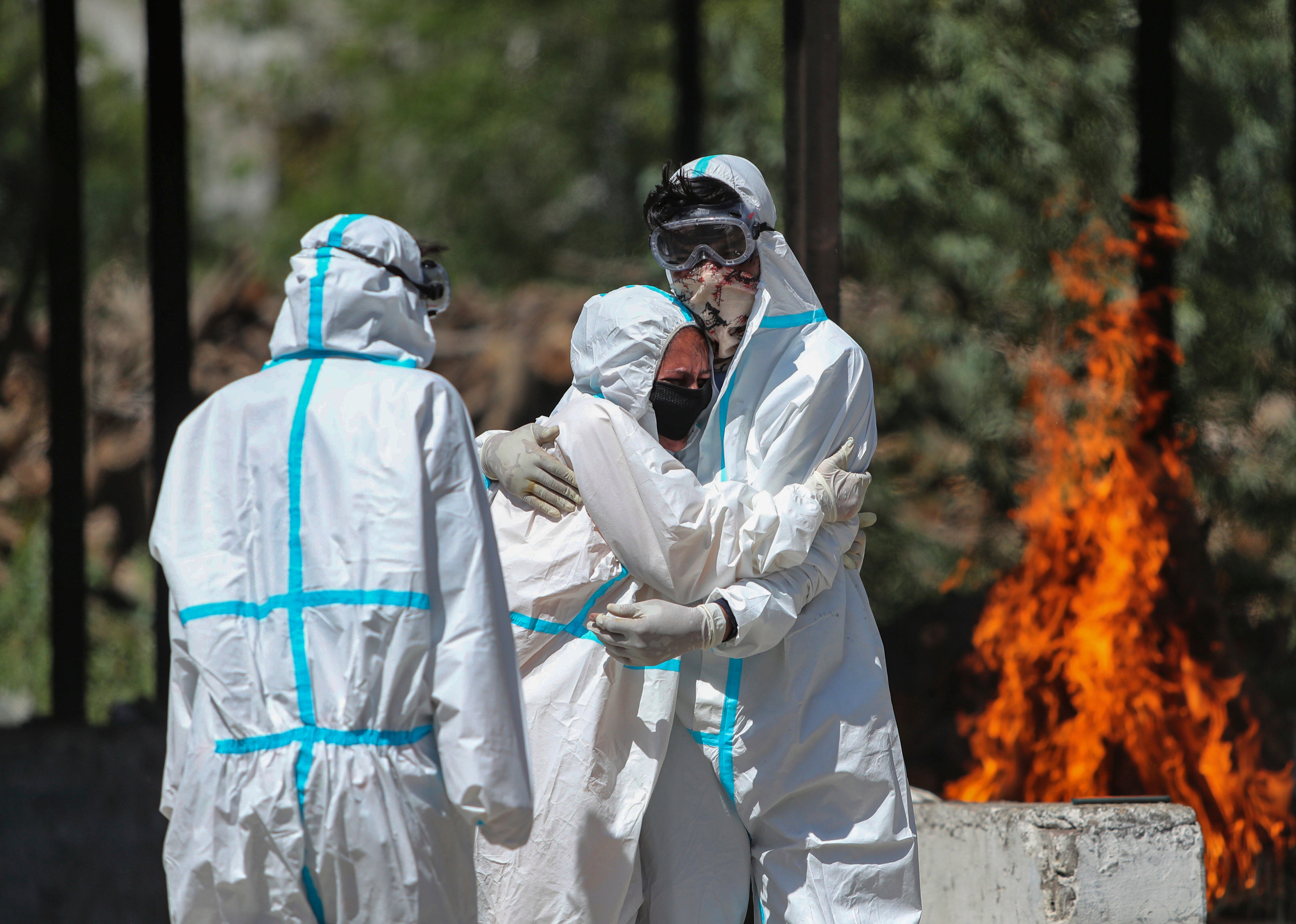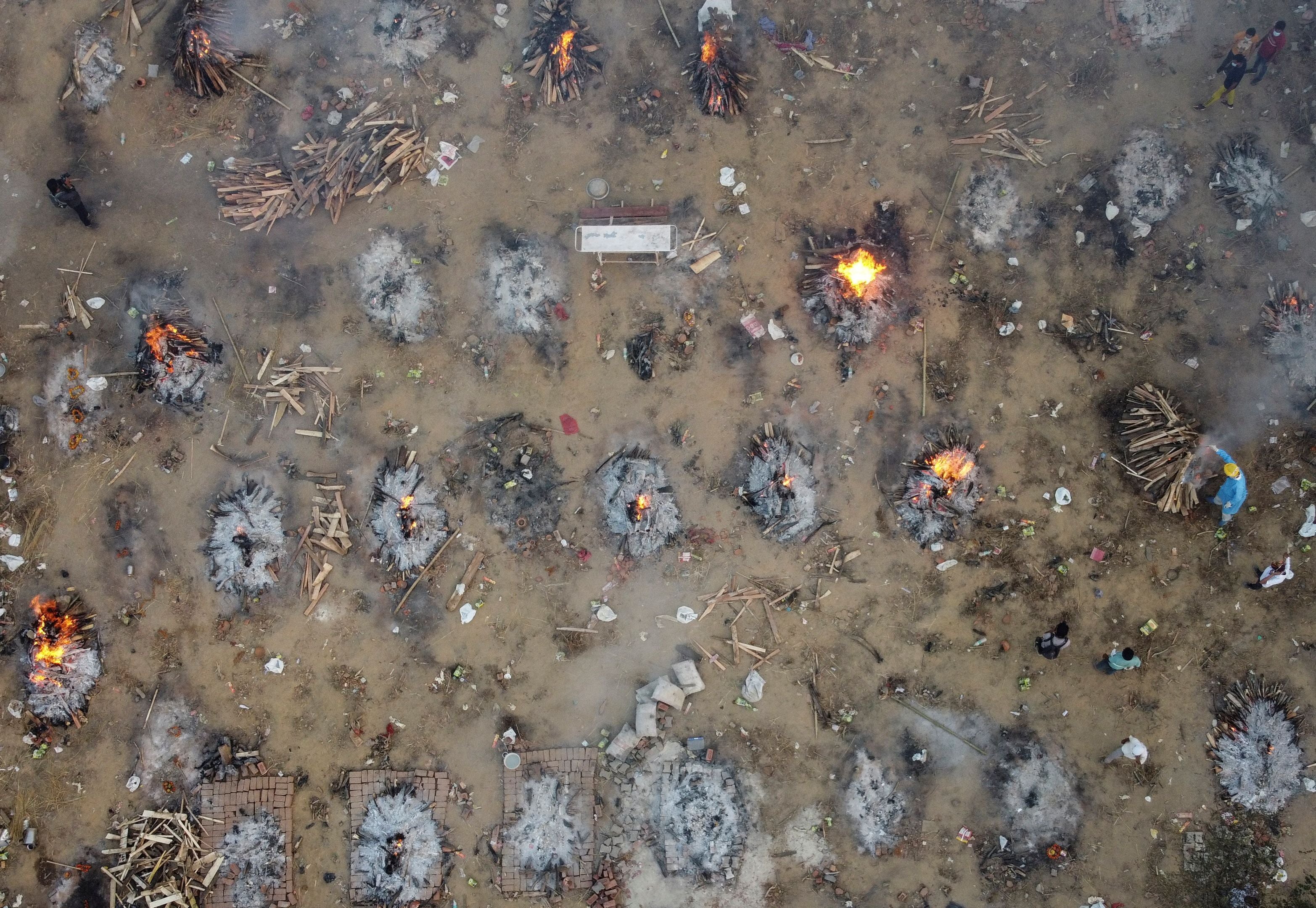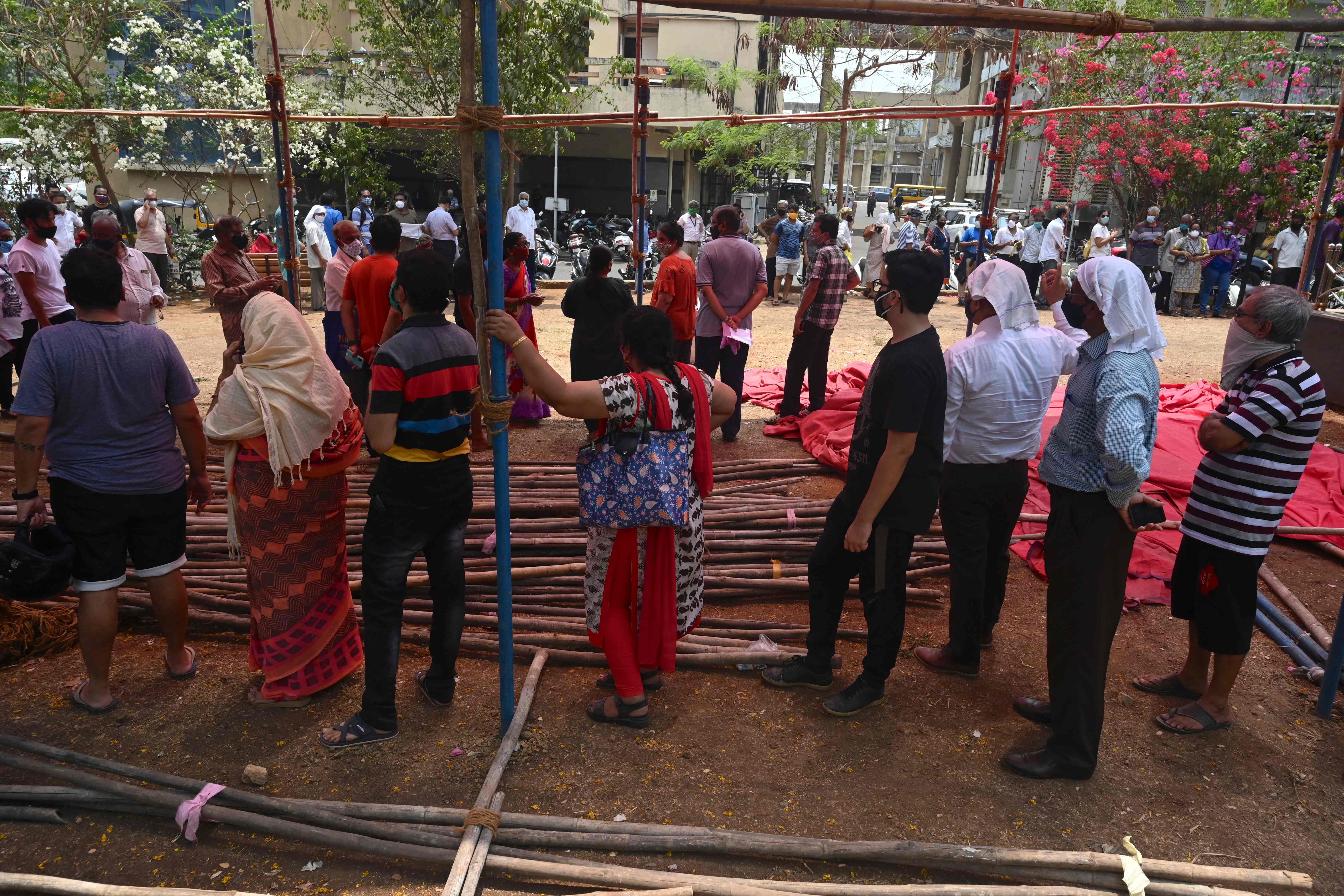How India, the ‘pharmacy of the world’, ran short of vaccines
India was supposed to deliver vaccines to 92 countries, now its own inoculation drive is under threat, reports Stuti Mishra in Delhi


Just a few months ago, India was being hailed as the “pharmacy of the world” and was selling and donating millions of doses of Covid-19 vaccines to other countries.
However, with a deadly second wave wreaking havoc in the country, it now finds itself short of vaccines to inoculate its adult population, raising questions over Narendra Modi’s government’s planning and preparedness.
News of India’s vaccine shortage – as it goes to inoculate all of its adult population from 1 May – comes as the country is facing its worst humanitarian crisis in years with people dying outside hospital gates after failing to get a bed, oxygen shortages claiming lives every day and funeral pyres lit en masse in crematoria around the country.
India reported almost 353,000 cases of Covid-19 on Monday, the fifth consecutive day the country set a global record as infections passed 17 million and deaths reached a record high of 2,812, with the total number of fatalities now approaching 200,000.
However, many experts believe even those desperate numbers do not paint the whole picture. They believe the figures are much higher in the capital Delhi and most major cities.
In addition, India’s two vaccine producers that it has depended upon are struggling to deliver their committed stocks as they face problems with funds and resources, forcing state governments to scale down their vaccination targets. Some vaccination centres have begun to suspend operations.
The health minister of the western state of Rajasthan told the ANI news agency it did not have enough jabs to begin inoculating those aged over 18 from 1 May. Another state’s health minister, TS Singh Deo of Chhattisgarh, also raised alarm over the lack of doses available. More than 10 states have reported a shortage in stocks.
“When we spoke to the Serum Institute, we were told by them it may take till May 15 to fulfil orders placed by the government and they won’t be able to deliver vaccines to Rajasthan before it,” state health minister Raghu Sharma says. He also said on Sunday the state only has “two days” of vaccines left.
The vaccine shortage in the country considered the world’s largest manufacturer can be a result of several factors including delayed orders, funding, raw material shortage and underestimating the coronavirus surge.

But before the situation took a turn for the worse, India was providing jabs to several other countries as a large number depended on the Serum Institute of India, the world’s largest producer, that is making the Oxford-AstraZeneca vaccine and which pledged to provide 550 million doses to 92 low- and middle-income countries under the Global Alliance for Vaccines and Immunisation’s COVAX programme. But in March, fears of vaccine shortages led to the government temporarily halting exports.
According to India's Ministry of External Affairs, the country exported 66 million doses of Covid-19 vaccines to 94 countries up until Sunday.
However, according to the data collated by Bloomberg, while more than a billion vaccines have been produced and administered to people around the world in 172 countries by that date, the difference between doses administered in countries such as the US stands in sharp contrast with the number vaccinated in India.
The US has administered 226 million doses to its population so far. In the past week, an average of 2.82 million doses per day were administered, according to the report. However, by Saturday, the number of Covid-19 vaccine doses administered in India stood at 140,802,794. India’s fully vaccinated population stands at just 1.6 per cent while the US has 28 per cent of people who have received both doses of vaccines.
The reason behind the huge difference between the belief held by many over India’s capacity and what it has been able to deliver so far lies in a series of factors.
India was widely believed to be the world’s largest vaccine manufacturer, however, its capacity was mainly focused on child vaccines such as for polio.
The Serum Institute was carrying the hopes of the country to deliver jabs for its 1.3 billion population.
A lot was said about its enormous capacity and to its credit, the company also produced millions of doses in advance even before the Indian government placed an order. At one point it was running out of storage space. However, according to a report by the Times of India quoting two sources, the government’s delay in placing orders put the company in a difficult spot.
SII’s chief Adar Poonawalla has also said that without getting to sell its jabs outside the country and in private markets, the company is not making good profits.
He asked for a government grant of almost £290m to scale up the production of the vaccine by 100 million doses by June in order to meet its commitments. The government of India agreed to the demand after the pandemic got worse. Mr Poonawalla said as his company was providing jabs to the Indian government at a discounted rate of less than £2, it was not making a significant profit to scale up its production.
SII also raised concerns over raw material shortages which it attributed to US export bans. Another Indian manufacturer, Biological E, which is producing the Johnson & Johnson vaccine, had also raised concerns about possible shortages of vital materials. On Sunday, the White House decided to lift the ban on the exports.
In order to bring more vaccine producers on board, the Indian government fast-tracked its approval system for jabs such as Pfizer and Moderna, which it earlier rebuffed. It also approved the Russian Sputnik V vaccine which is being produced by India’s Dr Reddy labs.
However, the government has not issued any information on new rules under which the foreign firms apply for authorisation. According to the Indian Express, Pfizer intends to supply doses of its Covid-19 vaccine to India “only through government contracts”.
Pfizer confirmed to The Independent that it is looking for ways to provide its jabs in India. “We remain committed to continuing our engagement with the Government [of India] towards making the Pfizer-BioNTech COVID-19 vaccine available,” a statement said.
The US pharma giant, which was the first to apply for emergency use authorisation for its vaccine in India, withdrew earlier this year, with Indian media reports claiming its prices and cold storage requirements as problems. India’s health minister Dr Harshvardhan also publicly doubted the ability of Pfizer to manufacture vaccines in India and said “India may not need” them.
The Independent asked Moderna whether it will be applying for authorisation but it did not respond.
Dr Reddy’s Labs told NDTV last week that a few doses of the imported Sputnik V vaccines should be available in India by May or June but the company hasn’t indicated when locally made doses will become available.
India seems to be heading to its largest inoculation drive so far on 1 May with just two manufacturers.
As the federal government aims to provide relief to the manufacturers, it has also increased concerns as it allowed states to negotiate prices for half of their production.

Until now India was inoculating those aged 45 and above for free. There is a fear new guidelines will make vaccines unaffordable and exclude millions of India’s poor.
The SII will be selling its jabs for 400 rupees (£3.86) to state governments and 600 rupees (£5.77) to private hospitals. Dr Reddy labs has announced a rate of 750 rupees (£7.21) for its jabs when they are available, although a few states have announced they will be providing the jabs for free to adults. However, the government hasn’t announced any cap on vaccine prices.
Several members of India’s opposition Congress Party have accused the government of shifting the blame on states and prioritising profit over public health.
But even if the increased pricing helps manufacturers increase production, immediate needs cannot be met.
Join our commenting forum
Join thought-provoking conversations, follow other Independent readers and see their replies
Comments